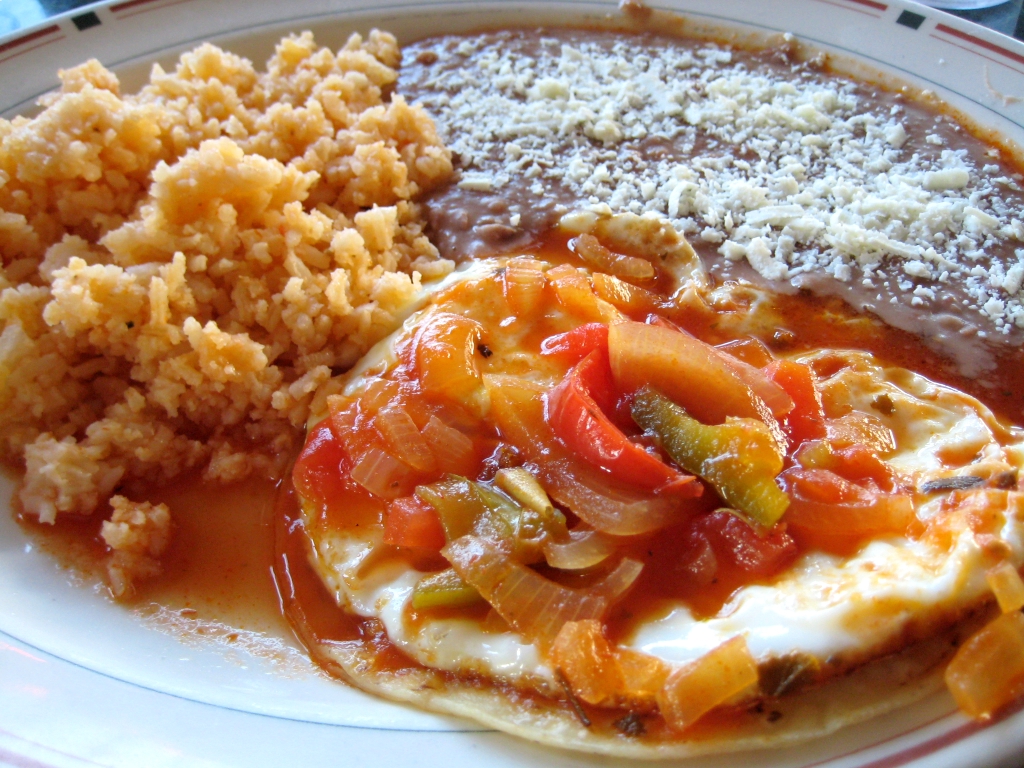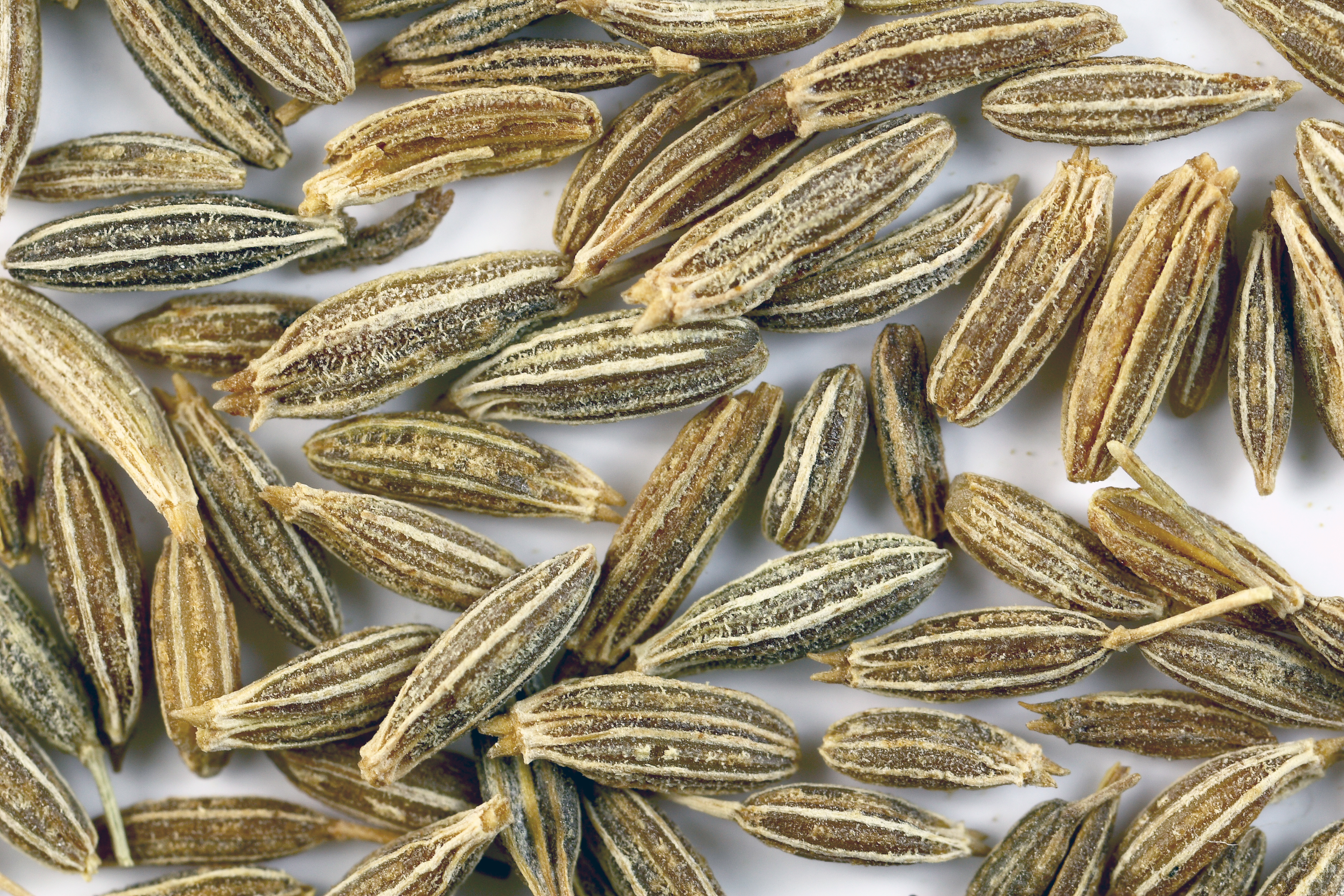|
Chilorio
Chilorio is a pork dish from the Mexican state of Sinaloa. Chilorio is generally made from pork fried in chili sauce. In making chilorio, pork is slow-simmered for hours until it falls apart. It is then broken into bite size pieces, fried in lard, and cooked in a chile sauce made from re-hydrated dried chiles. The sauce is usually flavored with onions, cumin and garlic. History This recipe has been known for approximately 300 years and is believed to have been used as a means of preserving stewed meat, as the seasonings act as natural preservatives just like lard, in the same way as a sausage, only this one does not come packed in any casing or membrane. Preparation For the preparation of chilorio, as it is prepared in Sinaloa, it is very important that all of its ingredients are of good quality. Pork meat, chile pasilla, and spices (such as garlic, salt, cumin, and oregano) are used. The meat is put to cook in a container according to the amount of pork that is going to be ... [...More Info...] [...Related Items...] OR: [Wikipedia] [Google] [Baidu] |
List Of Mexican Dishes
The Spanish invasion of the Aztec Empire occurred in the 16th century. The basic staples since then remain native foods such as corn, beans, Cucurbita, squash and chili peppers, but the Europeans introduced many other foods, the most important of which were meat from domesticated animals, dairy products (especially cheese) and various herbs and spices, although key spices in Mexican cuisine are also native to Mesoamerica such as a large variety of chili peppers. Antojitos Street food in Mexico, called ''antojitos'', is prepared by street vendors in Mexico City, street vendors and at small traditional markets in Mexico. Most of them include corn as an ingredient. File:CemitaSandwich2.JPG, Cemita with milanesa File:Huarachesverdes.JPG, Preparation of ''huarache (food), huaraches'' File:01 Chilaquiles verdes con frijoles chinos.jpg, Chilaquiles File:Menudo in Houston TX 2013.jpg, Menudo (soup), Menudo File:Molotes.jpg, Molotes File:Cochinita pibil 2.jpg, Cochinita pibil is a traditi ... [...More Info...] [...Related Items...] OR: [Wikipedia] [Google] [Baidu] |
Sinaloa
Sinaloa (), officially the (), is one of the 31 states which, along with Mexico City, compose the Federal Entities of Mexico. It is divided into 18 municipalities, and its capital city is Culiacán Rosales. It is located in northwest Mexico and is bordered by the states of Sonora Sonora (), officially Estado Libre y Soberano de Sonora (), is one of the 31 states which, along with Mexico City, comprise the Administrative divisions of Mexico, Federal Entities of Mexico. The state is divided into Municipalities of Sonora, 72 ... to the northwest, Chihuahua (state), Chihuahua to the north and Durango to the east, both across the Sierra Madre Occidental; and Nayarit to the southeast. To the west, Sinaloa faces Baja California Sur, across the Gulf of California. The state covers an area of and includes the islands of Palmito Verde, Palmito de la Virgen, Altamura, Santa María, Saliaca, Macapule, and San Ignacio. In addition to the capital city, the state's important cities inc ... [...More Info...] [...Related Items...] OR: [Wikipedia] [Google] [Baidu] |
Pork
Pork is the culinary name for the meat of the pig (''Sus domesticus''). It is the most commonly consumed meat worldwide, with evidence of pig animal husbandry, husbandry dating back to 8000–9000 BCE. Pork is eaten both freshly cooked and preserved; Curing (food preservation), curing extends the shelf life of pork products. Ham, Gammon (meat), gammon, bacon, and sausage, pork sausage are examples of preserved pork. Charcuterie is the branch of cooking devoted to prepared meat products, many from pork. Pork is the most popular meat in the Western world, particularly in Central Europe. It is also very popular in East Asia, East and Southeast Asia (Mainland Southeast Asia, Philippines, Singapore, and East Timor). The meat is highly prized in Asian cuisines, especially in China (including Hong Kong) and Northeast India, for its fat content and texture. Some religions and cultures Religious restrictions on the consumption of pork, prohibit pork consumption, notably Islami ... [...More Info...] [...Related Items...] OR: [Wikipedia] [Google] [Baidu] |
Chili Sauce
Chili sauce and chili paste are condiments prepared with chili peppers. Chili sauce may be hot, sweet or a combination thereof, and may differ from hot sauce in that many sweet or mild varieties exist, which is typically lacking in hot sauces. Several varieties of chili sauce include sugar in their preparation, such as the Thai sweet chili sauce and Filipino '' agre dulce'', which adds sweetness to their flavor profile.'' Handbook of Vegetable Preservation and Processing'' pp. 162–164.''The Asian Grocery Store Demystified'', Linda Bladholm pp. 58–61. [...More Info...] [...Related Items...] OR: [Wikipedia] [Google] [Baidu] |
Onion
An onion (''Allium cepa'' , from Latin ), also known as the bulb onion or common onion, is a vegetable that is the most widely cultivated species of the genus '' Allium''. The shallot is a botanical variety of the onion which was classified as a separate species until 2011. The onion's close relatives include garlic, scallion, leek, and chives. The genus contains several other species variously called onions and cultivated for food, such as the Japanese bunching onion '' Allium fistulosum'', the tree onion ''Allium'' × ''proliferum'', and the Canada onion '' Allium canadense''. The name '' wild onion'' is applied to a number of ''Allium'' species, but ''A. cepa'' is exclusively known from cultivation. Its ancestral wild original form is not known, although escapes from cultivation have become established in some regions. The onion is most frequently a biennial or a perennial plant, but is usually treated as an annual and harvested in its first growing season. ... [...More Info...] [...Related Items...] OR: [Wikipedia] [Google] [Baidu] |
Cumin
Cumin (, ; ; ''Cuminum cyminum'') is a flowering plant in the family Apiaceae, native to the Irano-Turanian Region. Its seeds – each one contained within a fruit, which is dried – are used in the cuisines of many cultures in both whole and ground form. Although cumin is used in traditional medicine, there is no high-quality evidence that it is safe or effective as a therapeutic agent. Etymology and pronunciation The term comes via Middle English ''comyn'', from Old English ''cymen'' (which is cognate with Old High German ''kumin'') and Old French cummin, both from the Latin term . This in turn comes from the Ancient Greek (), a Semitic languages, Semitic borrowing related to Hebrew language, Hebrew () and Arabic (). All of these ultimately derive from Akkadian language, Akkadian (). The English word is traditionally pronounced (), like "coming" with an ⟨n⟩ instead of ⟨ng⟩ (/ŋ/)."Cumin." '' A Way with Words'' (Radio broadcast/podcast). 25 October 2014. Re ... [...More Info...] [...Related Items...] OR: [Wikipedia] [Google] [Baidu] |
Garlic
Garlic (''Allium sativum'') is a species of bulbous flowering plants in the genus '' Allium''. Its close relatives include the onion, shallot, leek, chives, Welsh onion, and Chinese onion. Garlic is native to central and south Asia, stretching from the Black Sea through the southern Caucasus, northeastern Iran, and the Hindu Kush; it also grows wild in parts of Mediterranean Europe. There are two subspecies and hundreds of varieties of garlic. Garlic has been used for thousands of years as a seasoning, culinary ingredient, traditional medical remedy; it was known in many ancient civilizations, including the Babylonians, Egyptians, Romans, and Chinese, and remains significant in many cuisines and folk treatments, especially across the Mediterranean and Asia. Garlic propagates in a variety of climates and conditions and is produced globally; China is by far the largest producer, accounting for over two thirds (73%) of the world's supply in 2021. Description Garli ... [...More Info...] [...Related Items...] OR: [Wikipedia] [Google] [Baidu] |
Mexican Cuisine
Mexican cuisine consists of the cuisines and associated traditions of the modern country of Mexico. Its earliest roots lie in Mesoamerican Cuisine, Mesoamerican cuisine. Mexican cuisine's ingredients and methods arise from the area's first agricultural communities, such as those of the Olmecs, Olmec and Maya civilization, Maya, who domesticated maize, created the standard process of nixtamalization, and established foodways. Successive waves of other Mesoamerican groups brought with them their cooking methods. These included the Teotihuacanos, Toltec, Huastec civilization, Huastec, Zapotec civilization, Zapotec, Mixtec, Otomi people, Otomi, Tarascan state, Purépecha, Totonac, Mazatec, Mazahua people, Mazahua, and Nahuas, Nahua. With the Mexica formation of the multi-ethnic Triple Alliance (Aztec Empire), culinary foodways became infused (Aztec cuisine). Today's food staples native to the land include corn (maize), turkey, beans, squash, amaranth, Chia seed, chia, avocados, to ... [...More Info...] [...Related Items...] OR: [Wikipedia] [Google] [Baidu] |
Pork Dishes
Pork is the culinary name for the meat of the pig (''Sus domesticus''). It is the most commonly consumed meat worldwide, with evidence of pig husbandry dating back to 8000–9000 BCE. Pork is eaten both freshly cooked and preserved; curing extends the shelf life of pork products. Ham, gammon, bacon, and pork sausage are examples of preserved pork. Charcuterie is the branch of cooking devoted to prepared meat products, many from pork. Pork is the most popular meat in the Western world, particularly in Central Europe. It is also very popular in East and Southeast Asia (Mainland Southeast Asia, Philippines, Singapore, and East Timor). The meat is highly prized in Asian cuisines, especially in China (including Hong Kong) and Northeast India, for its fat content and texture. Some religions and cultures prohibit pork consumption, notably Islam and Judaism. History Pigs were domesticated in Mesopotamia around 13,000 BC. The pig appears to have been among the earliest ... [...More Info...] [...Related Items...] OR: [Wikipedia] [Google] [Baidu] |




